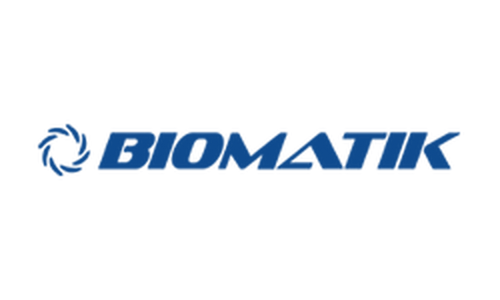Product Description
Recombinant Mouse Fibroblast growth factor 1 (Fgf1) (Active) is available at Gentaur for Next week Delivery.
Gene Name: Fgf1
Alternative Names : Fibroblast Growth Factor 1; FGF-1; Acidic Fibroblast Growth Factor; aFGF; Heparin-Binding Growth Factor 1; HBGF-1; Fgf1; Fgf-1; Fgfa
Expression Region : 16-155aa
AA Sequence : FNLPLGNYKKPKLLYCSNGGHFLRILPDGTVDGTRDRSDQHIQLQLSAESAGEVYIKGTETGQYLAMDTEGLLYGSQTPNEECLFLERLEENHYNTYTSKKHAEKNWFVGLKKNGSCKRGPRTHYGQKAILFLPLPVSSD
Sequence Info : Full Length of Mature Protein
Tag Info : Tag-Free
Theoretical MW : 15.7 kDa
Storage Buffer : Lyophilized from a 0.2 ?m filtered 20 mM Tris-HCl, 500 mM NaCl, pH 6.6
Endotoxin Level : Less than 1.0 EU/µg as determined by LAL method.-
Biological Activity : The ED50 as determined by the dose-dependent stimulation of thymidine uptake by 3T3 cells in the presence of Heparin is less than 1.6 ng/mL.
Storage : Short term: -20°C; Long term: -80°C. Minimize freeze and thaw cycles.
Research Area : Signal Transduction
Restriction : For Research Use Only. Not for use in diagnostic procedures, drug use, or for administration to humans or animals.
Relevance : FGF acidic is a 17 kDa nonglycosylated member of the FGF family of mitogenic peptides. FGF acidic, which is produced by multiple cell types, stimulates the proliferation of all cells of mesodermal origin and many cells of neuroectodermal, ectodermal, and endodermal origin. It plays a number of roles in development, regeneration, and angiogenesis. FGF-acidic is a non-glycosylated heparin binding growth factor that is expressed in the brain, kidney, retina, smooth muscle cells, bone matrix, osteoblasts, astrocytes and endothelial cells. FGF-acidic has the ability to signal through all the FGF receptors.
Function : Plays an important role in the regulation of cell survival, cell division, angiogenesis, cell differentiation and cell migration. Functions as potent mitogen in vitro. Acts as a ligand for FGFR1 and integrins. Binds to FGFR1 in the presence of heparin leading to FGFR1 dimerization and activation via sequential autophosphorylation on tyrosine residues which act as docking sites for interacting proteins, leading to the activation of several signaling cascades. Binds to integrin ITGAV
Involvement in disease :
Subcellular location : Secreted, Cytoplasm, Cytoplasm, cell cortex, Cytoplasm, cytosol, Nucleus
Protein Families : Heparin-binding growth factors family
Tissue Specificity :
Paythway :
Uniprot ID : P61148
 Euro
Euro
 British Pound
British Pound
 US Dollar
US Dollar








